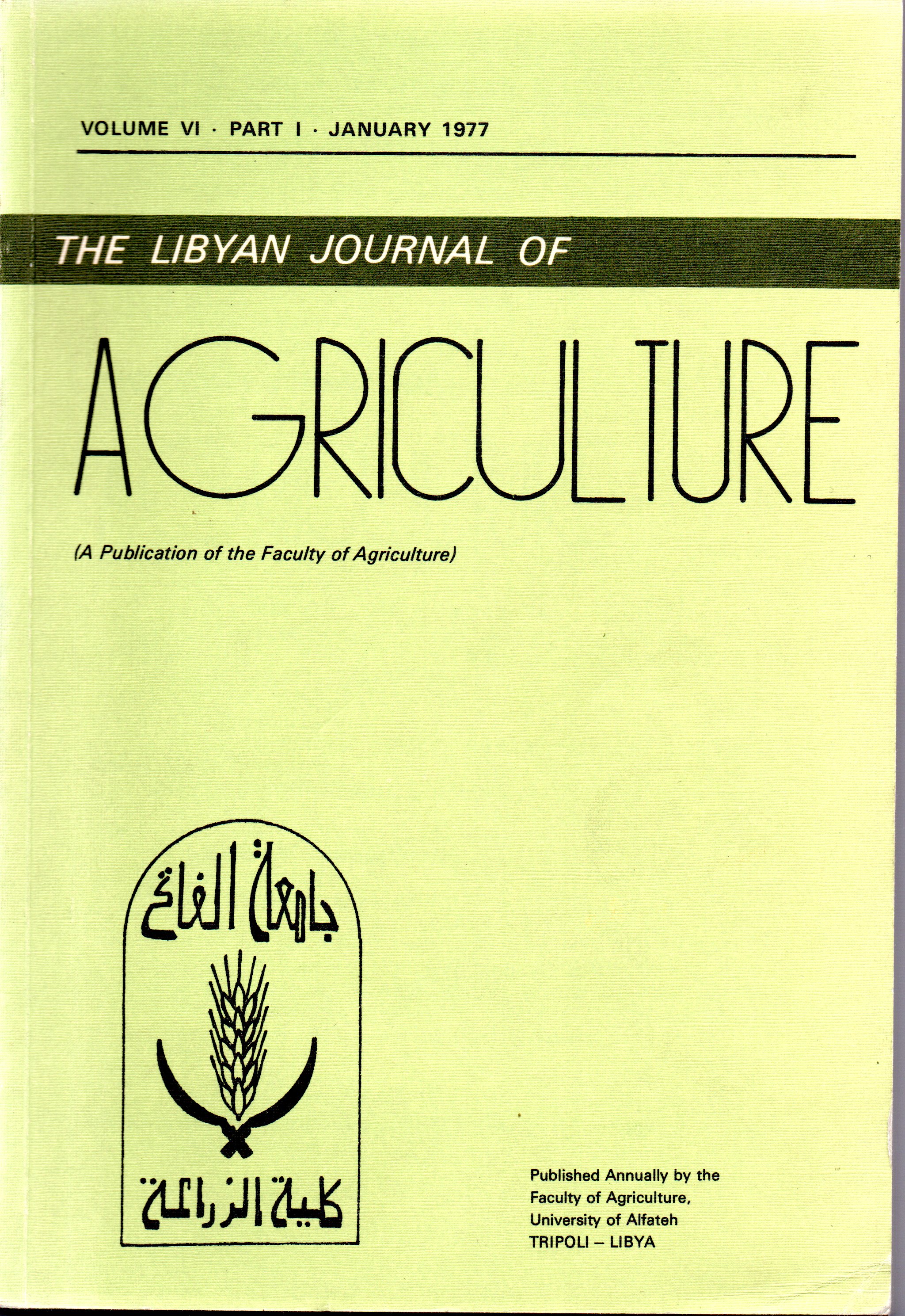The Influence of Herbicides on Major Field Crops in the Newly Reclaimed Areas of Egypt. I.Effect of Preemergence Application of Herbicides on Rice, C otton, Maize, and Wheat Seedling Growth.
Main Article Content
Abstract
Seven herbicides: namely. Atrazine, Linuron, 2,4-D, Trifluralin, Fluometuron, Molinate, and Propanil, were tested in pots for their effect on the seedling growth of wheat, cotton, maize, and rice at the Faculty of Agricultre Experimental Farm, Alexandria, in 1970. Five or six concentrations of the herbicides were used.
Results indicated that wheat seedlings were very sensitive to ail herbicides at all concentrations except 2,4-Dat the rates of0.5 and 1.0 l/f(f = faddan = 4.200 m2). It was concluded that 2,4-D could be applied as a preemergence treatment to control weeds in wheat at the rate of 1.0 1/f.
Trifluralin and Fluometuron did not injure cotton seedlings up to the rates of 1.0 1/f and 1.5-2.0 kg/f, respectively. However, the other herbicides killed cotton seedlings, especially at the higher concentrations. It was concluded that Trifluralin and Fluometuron might be applied as a preemergence treatment to control weeds in cotton at the rates of 1.0 1/f and 1.5-2.0 kg/f.
Results on rice seedlings indicated that it was possible to use the herbicides, Trifluralin, Molinate, Propanil, and 2,4-D at the rates of 1.0, 2.5, 6.0, and 1.0 1/f, respectively, and Atrazine at the concentration, 1.0 kg/f. Rice seedlings were killed by the higher rates of these herbicides. Moreover, the seedlings were seriously injured by Fluometuron and Linuron, especially at the higher concentrations.
Maize seedlings were very sensitive to all herbicides at all concentrations, except Linuron, Atrazine, and 2,4-D up to the rates of 1.0 kg/f, 1.0 kg/f, and 1.01/f, respectively. It was concluded that these latter herbicides and concentrations might be safely applied as preemergence treatments to control weeds in maize.

